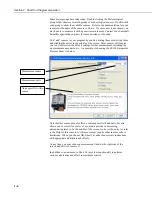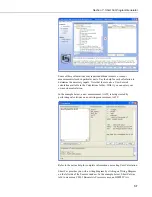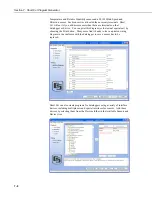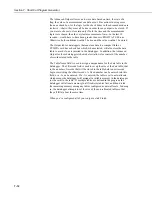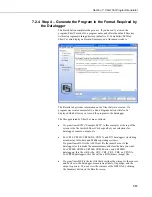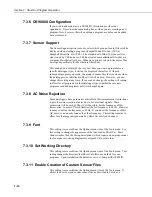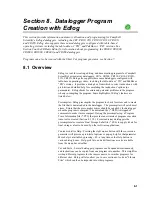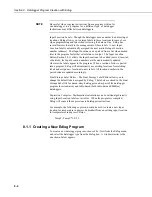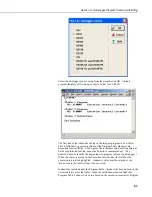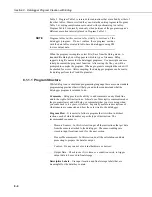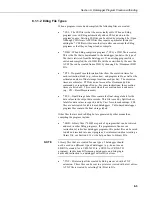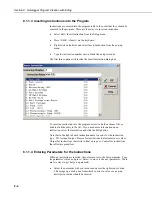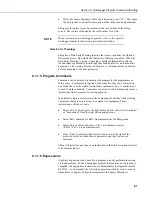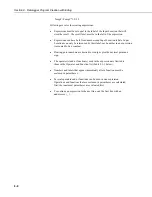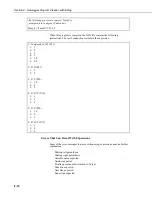
Section 7. Short Cut Program Generator
7.3.3 Datalogger ID
Mixed-array dataloggers keep a memory location available for a datalogger ID
value. This is typically an integer that you can read from within the program
and store into final storage to keep track of the identity of the datalogger that
created the data. Valid Datalogger IDs are 1 through 12 and 14 through 254.
Use the Datalogger ID instruction in Short Cut (found under Miscellaneous
Sensors) to use the ID in the datalogger program.
7.3.4 Power-up Settings
Some dataloggers offer the option to retain interim measurements or
calculations or the states of flags or ports when they power-up from a low
battery or loss of power condition. This may be useful when calculations are
used to control devices. You may, for example, want to ensure that pumps or
controls are off when a datalogger powers up so as to make the control
decision based on a fresh measurement. See the datalogger manual for a full
description of this feature.
7.3.5 Select CR200 Compiler
Use this setting to select the directory and executable name that will be used to
pre-compile the CR200/205 program to check for errors.
Most Campbell Scientific dataloggers are sent an ASCII program file, which
they then compile into machine code. The CR200/205 does not have enough
memory and processing capability to do this compilation, so it’s necessary to
compile the program file into the binary version used by the datalogger itself.
This compilation is done by Short Cut to check for errors in the program
before sending it. It’s done again by PC400 when sending the program to the
datalogger. Compilation is performed using a special executable that mimics
the functions and capability in the datalogger’s operating system. Therefore,
the compiler executable must match the datalogger’s operating system or the
datalogger may fail to run the compiled binary (*.BIN) program. PC400 and
Short Cut are installed with precompilers for all of the released versions of the
CR200/205 operating systems. If, at some time in the future, you acquire a
newer CR200/205, or choose to install a later operating system, you must make
sure you also have the compiler executable that matches. These compiler
executables are typically installed in library directory. By default, this
directory would be installed as:
C:\Campbellsci\Lib\CR200Compilers
If you receive an operating system update, you should copy the compiler
associated with it to this directory. If, for some reason, you put the compiler in
a different directory, this menu item provides a way to choose that compiler
executable.
7-15
Summary of Contents for PC400
Page 2: ......
Page 16: ...Section 1 Introduction 1 6...
Page 18: ...Section 2 System Requirements 2 2...
Page 46: ...Section 4 The PC400 Main Screen 4 24...
Page 49: ...Section 5 Split 5 3...
Page 82: ...Section 5 Split 5 36...
Page 114: ...Section 6 View 6 14...
Page 132: ...Section 7 Short Cut Program Generator 7 18...
Page 188: ...Section 9 Datalogger Program Creation with CRBasic Editor 9 30...
Page 230: ...Appendix B Table Based Dataloggers B 12...
Page 249: ......






